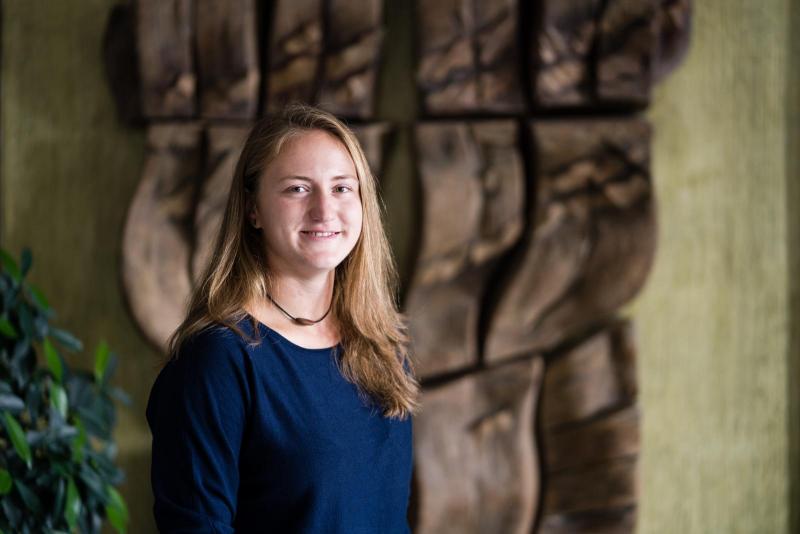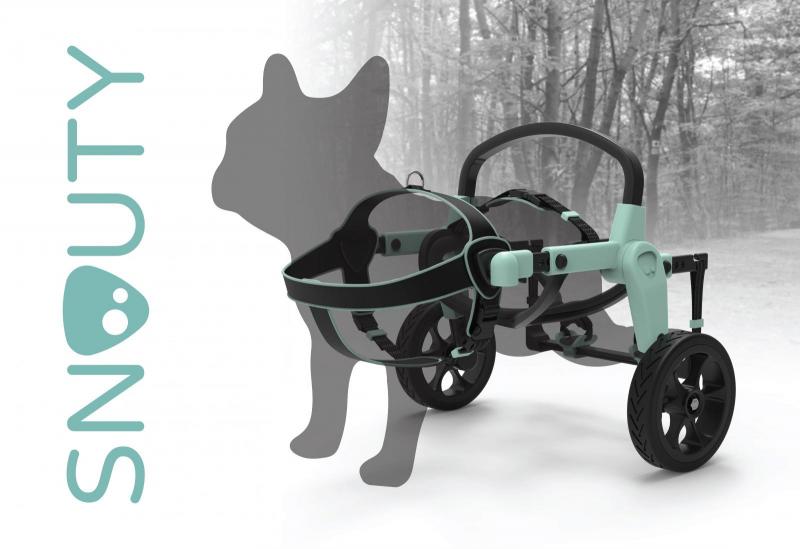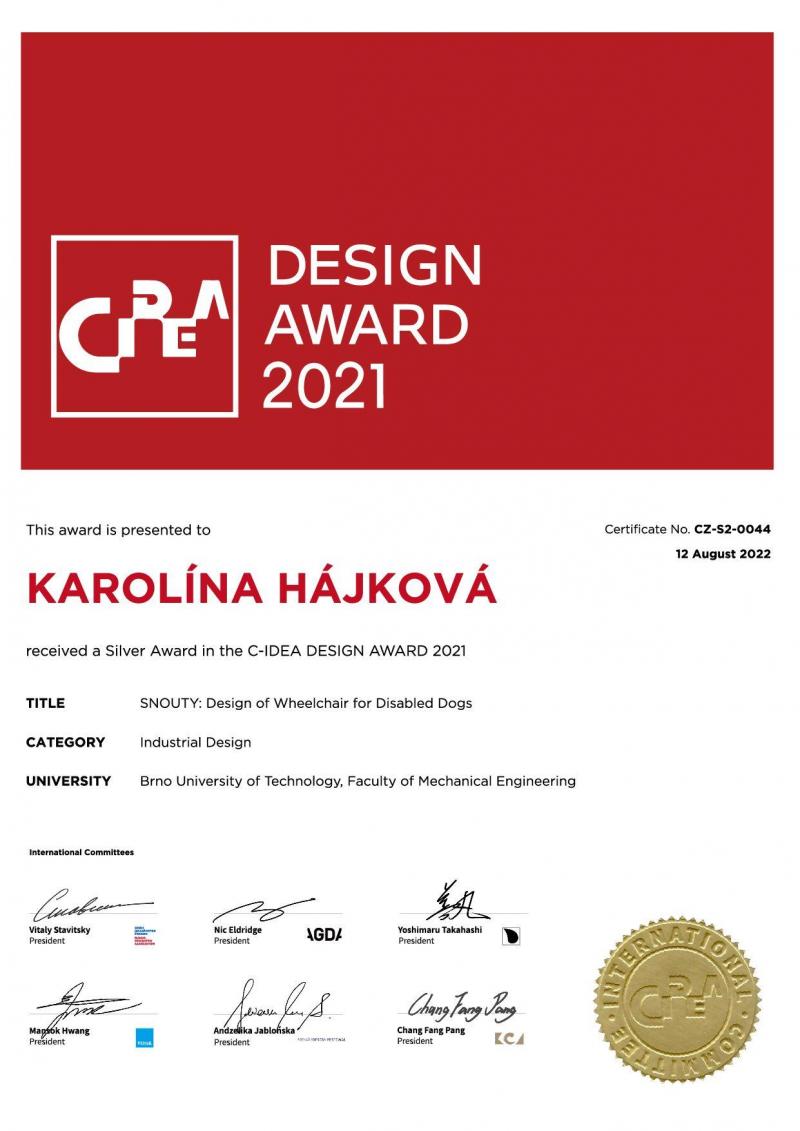People
When design helps. With the design of a dog wheelchair, the student succeeded in an international competition

"As a little girl, I wanted to become a veterinarian," confesses Karolína, who is finishing her Master's degree in industrial design at the Faculty of Mechanical Engineering. During her teenage years, however, she had to admit that some key subjects were not her strong suit, and so she abandoned her dream of becoming a veterinarian, but not her love for animals. And it was this love that led her to the Brno company AnyoneGo, where she asked for cooperation as a design student. "I just impudently went and wrote to them asking if we could agree on some kind of cooperation. They are in design and manufacture of pet wheelchairs and prostheses, bringing together two areas that I love," says Karolína.

At present, wheelchairs for handicapped dogs are mainly made of aluminum, with some places padded to prevent development of pressure sores. Karolína Hájková decided to choose the 3D printing technology and her main goal was to achieve a simple design and comfort of a four-legged patient. "Thanks to 3D printing, it was easier for me to adapt the design to the anatomy of the animal. I tried to make the cart as rugged as possible and easy to repair. It is hard to explain to a dog that the wheelchair was expensive and it should treat it carefully – it will run with it into a puddle or a bush anyway. That is why I opted to use the skateboard bearings: you can buy them almost anywhere and they can be easily replaced in a few minutes. The harnesses, in turn, are designed so that they do not chafe and do not feel cold when wet. The wheelchair wheels can also be folded, which allows the dog to rest, for example, during a walk and allows for better storage of the wheelchair," Karolína describes.

This year she is in her final year of studying industrial design. She also intends to stick to her focus on sick animals when writing her thesis. " As a topic, I have chosen a high-power therapeutic laser, but not for human medicine, but for use in veterinary practice. These devices are used in small animals in surgeries but also in large animals, for example, for the treatment of cows or horses – it means in outdoor conditions, to which they are not fully adapted. I want to design a universal device that will be usable across all these diverse conditions and that will be durable, practical and easy to carry around," Karolína plans.
After school, she would like to work in design of rehabilitation and health aids for animals, although she admits that the possibilities in the Czech Republic are rather limited. "Over the summer I designed braces for cats and luckily they worked. And I know a lot of dog patients, too. They often light up completely when they get the wheelchair. Suddenly, they are able to run again, they are able go into the water, you can see all the joy in them," concludes the young designer with enthusiasm.
I enjoy applying mechanical engineering to the human body, says doctoral student
Auxetic material behaves differently than you would expect, says student Tomáš Vítek
Obelix flew to the United States
Majáles returns after 2 years, royal candidates from BUT are ready to fight
Chickens with their heads in the clouds